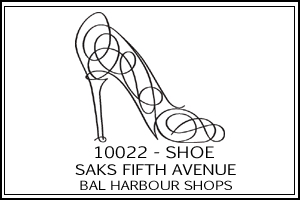
After a triumphant debut in New York at the Morrison Hotel Gallery, “Timeless,” Julian Lennon’s fine art photography exhibit, came to Miami for its exclusive South Florida premiere. Julian, the 47- year old son of late Beatles’ legend, John Lennon, is now free from any comparison. John Lennon never delved into photography.
Julian Lennon, an internationally-acclaimed musician and philanthropist, has been taking photos for many years, but going on tour with younger brother Sean and shooting him backstage made him realize how much passion he really had for photography. Then, U2 called asking if they could go record their latest album in Lennon’s home in the South of France. That resulted in a series of extraordinary, candid photos of the band in a photojournalism style.
The five-day exhibit at the Adrienne Arsht Center for the Performing Arts – during Art Basel/Miami Beach — was a collection of more than 30 hand-signed, limited edition portrait and landscape photographs by Lennon. Some of the photos were on sale there and at the SCOPE Art Fair, priced from $3500 to $4500, with a portion of the proceeds going to the White Feather Foundation (which Lennon launched to help environmental and humanitarian causes).
“Timeless” is the result of more than a year of collaboration between Julian Lennon and renowned celebrity photographer Timothy White, whom he’s known since 1985. White shot Lennon’s first two album covers.
Eerily enough, in the weeks preceding Julian Lennon’s Miami photo exhibit, enormous billboards showing the Beatles during their Abby Road period — to tout their music on iTunes — appeared throughout the city. One of the billboards loomed on the east wall of The Miami Herald newspaper building, a mere block away from the photo exhibit.
However, the public was so taken with Julian Lennon’s photography, there was never a mention of his late father, unlike what he endured when he launched his music career at the age of 20. It’s as if the universe breathed a sigh of relief.
Lennon was charming, funny and warm. Despite the crowd all around us, he was completely serene and focused on the interview. There was a twinkle in his eye about his spectacularly successful New York debut, yet remained quite humble.
Daisy Olivera
DAISY: Your opening exhibit of “Timeless” in New York was mobbed. It attracted an insane number of people. What surprised you about that evening?
LENNON: The insane number of people that showed up! (Laughs) My understanding at gallery openings, I’ve been to a few, it’s a very gentle, polite affair with a little white wine or champagne, a ‘hello how are you?’ a bit of a walk around. I thought maybe 20 or 30 people would show up…
DAISY: Oh come on, more than that!
LENNON: Maybe a few more, but nothing like the hundreds that did show up! That really shocked me. The only problem I found was I couldn’t see anybody I know! Friends came to see the show but it was very difficult to see and have a chat with anybody. Apart from that, what came out of it, the reviews really floored me, they were great. I was astounded.
DAISY: That they were positive?
LENNON: Yes! (Laughs)
DAISY: How many photos did you start with and what was the most difficult?
LENNON: I spent about two months alone editing down thousands and thousands of photos to come to a point at least manageable so that Timothy White, the curator, could really have a good selection. The most difficult part was editing to come up with a show that was of some relevance representation at least of some of the photography that I do … the reportage stuff of U2 and Sean (Lennon) and other people.
DAISY: It looks like a couple of people or different personalities shot the photos.
LENNON: The primary part of the exhibit are the painterly landscapes.
DAISY: They absolutely look like oil paintings.
LENNON: Those are the things I do in my spare time… things that I love. I see images that I want to capture because I would like them on my walls. I love looking at clouds. It’s dreaming, going off into a different world, almost like mediation. Finding an image that makes me feel at peace and close to Mother Nature.
DAISY: But then your reportage or photo-journalistic work, is completely different. Gritty. Realistic.
LENNON: Well, thank you! It was my first time, but initially when I first started taking shots of the boys, of U2 I was taking standard shots.
DAISY: Didn’t this kick everything off as far as the exhibit — while they were at your home in France?
LENNON: In some respects it did because initially when I went in with the camera I was taking quite standard shots, and I’m saying to myself, ‘that’s really boooring’, so I really had to try and look at it from different angles, from different points of views. I only worked with them for three days on and off, depending on the atmosphere, the mood, depending on their work flow.
DAISY: Obviously, you didn’t want to interfere with the real reason they were at your house, which was to record an album.
LENNON: Exactly. I’m aware of their sensibilities as artists. I know what it’s like when you’re trying to work and you’ve got cameras around you. Once I started editing these properly I went ‘wow they’re not bad… I think I can probably try and show a few of those in the exhibition just so people have a bit more a view of what else I can do.’
DAISY: You might be giving rock photographer Danny Clinch some serious competition I just interviewed him recently. (Read interview in Conversations) I’ll have to warn him!
LENNON: (Laughs) I don’t know about that! Danny’s got a show over at the W Hotel [on Miami Beach]. He’s a good friend of Timothy White, who curated my exhibition. I’m supposed to go over today.
DAISY: How is this debut different from when you started in music? Obviously you’re older and wiser?
LENNON: I hope! (laughs) This is still a very creative, like music is for me, but a completely different vibe. Unlike music, as a photographer you see the image, shoot the image, you take the image back to the lab and you finally see the image. It’s a shared journey to some degree because you work with curators etc but it’s a very solo journey in many respects.
DAISY: What about public life? Because you did go through everything that fame brings with it, good and bad.
LENNON: This has just allowed me another creative outlet, apart from some of the hoopla that one has to deal with from the media. Some of it’s good, some of it’s not so good.
DAISY: Back then, the obvious comparison with your father because of the music?
LENNON: Yes. Photography has allowed me to get on with just getting on with it and just begin as a photographer.
DAISY: Did you find it freeing?
LENNON: Very much so!
——————————————-
(Lennon has had a critically acclaimed music career, which included multiple awards. His highly anticipated sixth album, Everything Changes, will be released this year.)
Full exhibition photography can be seen at www.tableaufineartphoto.com
The Miami event was produced by Awesome Global Events with ACT Productions and Soulfrito Arts Foundation.












Speak Your Mind